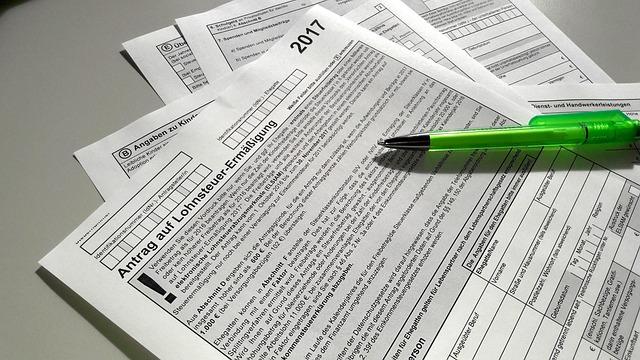Return & Recycle Insights – 2 Years of DRS in Romania
Two years after the introduction of the Deposit Return Scheme (DRS) in Romania, significant strides have been made in advancing the country’s recycling efforts and reducing environmental waste. This milestone offers a valuable opportunity to examine the scheme’s impact on consumer behavior, collection rates, and the broader waste management landscape. Romania Insider explores the key insights and challenges emerging from the DRS experience, shedding light on its role in shaping a more sustainable future.
Return and Recycle Patterns Reveal Key Consumer Behaviors in Romania
Over the past two years, Romania’s Deposit Return System (DRS) has not only boosted recycling rates but also shed light on distinct consumer habits. Data indicate that urban populations return plastic and glass containers at higher rates than rural areas, highlighting differences in environmental engagement and accessibility. Additionally, younger consumers, particularly those aged 18 to 34, demonstrate more consistent participation in the system, suggesting that educational campaigns and digital incentives are successfully resonating with this demographic. This behavioral insight is crucial for tailoring future sustainability initiatives and enhancing user experience across the country.
Key trends emerging from the DRS reveal that convenience and reward mechanisms significantly affect return frequency. Consumers most often return containers at supermarket kiosks, while return rates at standalone machines lag behind. Furthermore, frequent recyclers tend to prefer lightweight, single-use packaging, while heavier glass bottles remain less consistently returned. The following overview summarizes the principal consumer patterns identified:
- Urban vs. Rural: 65% return rate in cities vs. 42% in rural zones
- Age Demographics: 72% participation among 18-34 years compared to 50% in older groups
- Return Locations: 80% at retail kiosks, 20% at standalone machines
- Packaging Type Preferences: Plastic bottles favored over glass by 3:1 ratio
| Consumer Segment | Return Rate | Preferred Return Method |
|---|---|---|
| Urban Young Adults | 75% | Retail Kiosk |
| Urban Older Adults | 58% | Retail Kiosk |
| Rural Residents | 42% | Standalone Machines |
Environmental Impact of the Deposit Return Scheme Assessed Through Two Years of Data
The implementation of the Deposit Return Scheme (DRS) in Romania has yielded significant environmental benefits over the past two years. Preliminary data reveals a notable reduction in litter across urban and rural areas, highlighting the scheme’s effectiveness in encouraging responsible disposal. Key environmental indicators, such as decreased landfill usage and a surge in recycled beverage containers, point to a shift toward greater sustainability. Citizens have returned over 450 million containers, translating into an estimated 25,000 tons of materials diverted from waste streams. This achievement underscores the role of consumer engagement in environmental policy success.
Beyond the impressive collection figures, the scheme has positively influenced carbon footprint reduction and resource conservation. Early analysis indicates the following impacts:
- 30% reduction in plastic bottle litter in metropolitan zones
- 20% decrease in greenhouse gas emissions linked to packaging production
- Improved quality of recyclables, leading to more efficient processing
| Environmental Metric | Pre-DRS | After 2 Years | Change |
|---|---|---|---|
| Plastic Bottle Litter (tons/year) | 15,000 | 10,500 | -30% |
| Container Recycling Rate | 60% | 88% | +28% |
| Landfill Waste | 50,000 tons | 42,000 tons | -16% |
Policy Recommendations for Enhancing Romania’s Circular Economy Through DRS Improvements
To accelerate Romania’s transition to a fully circular economy, strategic enhancements to the existing Deposit Return Scheme (DRS) must focus on broadening stakeholder collaboration and streamlining operational efficiency. Increased incentives for retailers and consumers alike would reinforce participation, while expanding collection infrastructure in both urban and rural areas ensures accessibility and convenience. Policymakers should prioritize integrating smart technology – such as app-based return tracking and AI-powered sorting – to reduce contamination rates and improve recycling quality. Furthermore, clear communication campaigns emphasizing environmental impact can foster behavioral change, especially among younger demographics.
Embedding flexibility within the DRS framework can further empower local authorities and private partners to tailor initiatives according to regional needs. This could include:
- Dynamic deposit values based on bottle material and size to incentivize higher-return rates.
- Collaborative funding models, encouraging shared investment between public sectors and manufacturers.
- Periodic impact assessments for continuous policy refinement.
| Policy Aspect | Proposed Improvement | Expected Outcome |
|---|---|---|
| Incentive Structures | Higher deposits for PET and glass bottles | Boosted return rates by up to 20% |
| Infrastructure Expansion | More automated reverse vending machines nationwide | |
| Infrastructure Expansion | More automated reverse vending machines nationwide | Increased convenience and accessibility, improving return volumes |
| Smart Technology Integration | App-based return tracking and AI sorting systems | Reduced contamination, higher recycling quality |
| Communication Campaigns | Targeted environmental awareness drives, especially for youth | Behavioral change leading to sustained participation |
















